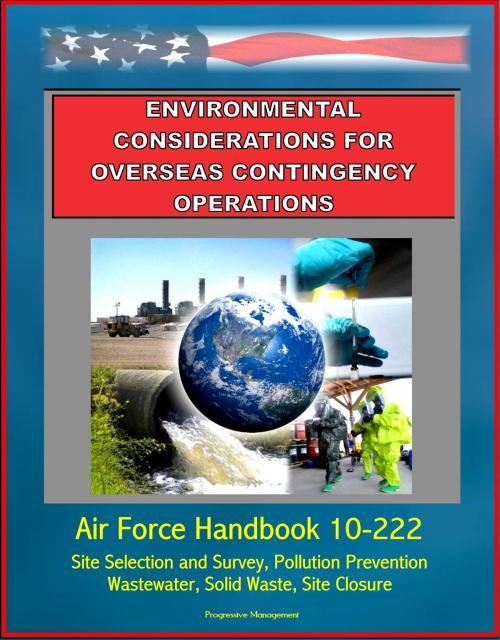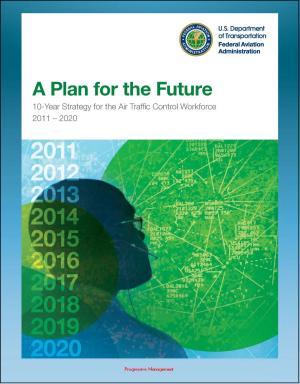Environmental Considerations for Overseas Contingency Operations: Air Force Handbook 10-222 - Site Selection and Survey, Pollution Prevention, Wastewater, Solid Waste, Site Closure
Nonfiction, Science & Nature, Technology, Engineering, Environmental| Author: | Progressive Management | ISBN: | 9781301002733 |
| Publisher: | Progressive Management | Publication: | February 21, 2013 |
| Imprint: | Smashwords Edition | Language: | English |
| Author: | Progressive Management |
| ISBN: | 9781301002733 |
| Publisher: | Progressive Management |
| Publication: | February 21, 2013 |
| Imprint: | Smashwords Edition |
| Language: | English |
This handbook contains guidance on environmental considerations for Air Force (AF) civil engineer (CE) personnel, including Air National Guard and Air Force Reserve personnel deployed in support of contingency operations outside the United States (U.S.) and its territories and possessions. It outlines strategies for use in minimizing negative impacts on the mission resulting from environmental health and safety hazards and environmental neglect. These practices can help avoid or mitigate adverse impacts to human health and the environment during contingencies.
The United States Air Force (USAF) is committed to maintaining environmental quality to ensure long-term access to the air, land and water needed to protect U.S. interests abroad. Although a high level of environmental quality can be difficult to achieve during contingency operations, this goal is becoming less of an option and more of a mandate in successfully accomplishing the mission. By their very nature, contingency operations are rapid and time-constrained. Time is not always available to conduct comprehensive environmental planning prior to entering foreign countries when confronting enemies, conducting disaster relief or performing humanitarian operations. During initial stages of a conflict, the focus will be on accomplishing the mission and preserving human life. However, we must recognize failure to maintain basic environmental standards could result in illnesses, diseases and even death.
Chapter 1 — INTRODUCTION * 1.1. CE Hierarchy of Publications * 1.2. Overview * 1.3. Goals * 1.4. Environmental Policy and Key References * 1.5. Responsibilities * Chapter 2 — ENVIRONMENTAL PLANNING * 2.1. Overview * 2.2. Site Selection and Survey * 2.3. Geospatial Information Systems * 2.4. Air Force Contract Augmentation Program (AFCAP) * 2.5. Environmental Plans * 2.6. Planning Considerations * 2.7. Risk Management * 2.8. Environmental Training * 2.9. Effective Documentation * 2.10. Surveys and Reports * 2.11. Pollution Prevention (P2) * 2.12. Water Sources * 2.13. Wastewater * 2.14. Solid Waste * 2.15. Hazardous Material/Hazardous Waste * 2.16. Regulated Medical Waste (RMW) * 2.17. Pest Management * 2.18. Storm Water * 2.19. Air Pollution * 2.20. Historical and Cultural Resources * 2.21. Natural Resources * 2.22. Flora and Fauna * Chapter 3 — INITIAL BEDDOWN * 3.1. Overview * 3.2. Pollution Prevention * 3.3. Water Sources * 3.4. Wastewater * 3.5. Solid Waste * 3.6. Hazardous Material * 3.7. Hazardous Waste * 3.8. Identification and Storage of Unknowns * 3.9. Spill Prevention and Response * 3.10. Landfarming * 3.11. Regulated Medical Waste * 3.12. Pest Management * 3.13. Storm Water * 3.14. Air Pollution * 3.15. Historical and Cultural Resources * 3.16. Natural Resources * 3.17. Flora and Fauna * Chapter 4 — SUSTAINMENT * 4.1. Overview * 4.2. Pollution Prevention * 4.3. Water Sources * 4.4. Wastewater * 4.5. Solid Waste * 4.6. Hazardous Material * 4.7. Hazardous Waste * 4.8. Regulated Medical Waste * 4.9. Pest Management * 4.10. Storm Water * 4.11. Air Pollution * 4.12. Historical and Cultural Resources * 4.13. Natural Resources * 4.14. Flora and Fauna * Chapter 5 — SITE CLOSURE/REDEPLOYMENT * 5.1. Overview * 5.2. Closure Survey * 5.3. Site Environmental Closure Plan * 5.4. Closing Standards * 5.5. Disposition of Hazardous Materials/Hazardous Waste.. * 5.6 Site Cleanup . * 5.7. Closure Report . * Attachment 1— GLOSSARY OF REFERENCES AND SUPPORTING INFORMATION * Attachment 2 — ENVIRONMENTAL BASELINE SURVEY INSTRUCTIONS * Attachment 3 — ENVIRONMENTAL CONDITIONS REPORT FORMAT * Attachment 4 — ACCUMULATION POINT INSPECTION CHECKLIST * Attachment 5 — ENVIRONMENTAL SUPPLIES * Attachment 6 — STORAGE SEGREGATION * Attachment 7 — DISPOSAL DOCUMENTS AND INFORMATION * Attachment 8 — SAMPLE PERFORMANCE WORK STATEMENT * Attachment 9 — SITE CLOSURE CHECKLIST
This handbook contains guidance on environmental considerations for Air Force (AF) civil engineer (CE) personnel, including Air National Guard and Air Force Reserve personnel deployed in support of contingency operations outside the United States (U.S.) and its territories and possessions. It outlines strategies for use in minimizing negative impacts on the mission resulting from environmental health and safety hazards and environmental neglect. These practices can help avoid or mitigate adverse impacts to human health and the environment during contingencies.
The United States Air Force (USAF) is committed to maintaining environmental quality to ensure long-term access to the air, land and water needed to protect U.S. interests abroad. Although a high level of environmental quality can be difficult to achieve during contingency operations, this goal is becoming less of an option and more of a mandate in successfully accomplishing the mission. By their very nature, contingency operations are rapid and time-constrained. Time is not always available to conduct comprehensive environmental planning prior to entering foreign countries when confronting enemies, conducting disaster relief or performing humanitarian operations. During initial stages of a conflict, the focus will be on accomplishing the mission and preserving human life. However, we must recognize failure to maintain basic environmental standards could result in illnesses, diseases and even death.
Chapter 1 — INTRODUCTION * 1.1. CE Hierarchy of Publications * 1.2. Overview * 1.3. Goals * 1.4. Environmental Policy and Key References * 1.5. Responsibilities * Chapter 2 — ENVIRONMENTAL PLANNING * 2.1. Overview * 2.2. Site Selection and Survey * 2.3. Geospatial Information Systems * 2.4. Air Force Contract Augmentation Program (AFCAP) * 2.5. Environmental Plans * 2.6. Planning Considerations * 2.7. Risk Management * 2.8. Environmental Training * 2.9. Effective Documentation * 2.10. Surveys and Reports * 2.11. Pollution Prevention (P2) * 2.12. Water Sources * 2.13. Wastewater * 2.14. Solid Waste * 2.15. Hazardous Material/Hazardous Waste * 2.16. Regulated Medical Waste (RMW) * 2.17. Pest Management * 2.18. Storm Water * 2.19. Air Pollution * 2.20. Historical and Cultural Resources * 2.21. Natural Resources * 2.22. Flora and Fauna * Chapter 3 — INITIAL BEDDOWN * 3.1. Overview * 3.2. Pollution Prevention * 3.3. Water Sources * 3.4. Wastewater * 3.5. Solid Waste * 3.6. Hazardous Material * 3.7. Hazardous Waste * 3.8. Identification and Storage of Unknowns * 3.9. Spill Prevention and Response * 3.10. Landfarming * 3.11. Regulated Medical Waste * 3.12. Pest Management * 3.13. Storm Water * 3.14. Air Pollution * 3.15. Historical and Cultural Resources * 3.16. Natural Resources * 3.17. Flora and Fauna * Chapter 4 — SUSTAINMENT * 4.1. Overview * 4.2. Pollution Prevention * 4.3. Water Sources * 4.4. Wastewater * 4.5. Solid Waste * 4.6. Hazardous Material * 4.7. Hazardous Waste * 4.8. Regulated Medical Waste * 4.9. Pest Management * 4.10. Storm Water * 4.11. Air Pollution * 4.12. Historical and Cultural Resources * 4.13. Natural Resources * 4.14. Flora and Fauna * Chapter 5 — SITE CLOSURE/REDEPLOYMENT * 5.1. Overview * 5.2. Closure Survey * 5.3. Site Environmental Closure Plan * 5.4. Closing Standards * 5.5. Disposition of Hazardous Materials/Hazardous Waste.. * 5.6 Site Cleanup . * 5.7. Closure Report . * Attachment 1— GLOSSARY OF REFERENCES AND SUPPORTING INFORMATION * Attachment 2 — ENVIRONMENTAL BASELINE SURVEY INSTRUCTIONS * Attachment 3 — ENVIRONMENTAL CONDITIONS REPORT FORMAT * Attachment 4 — ACCUMULATION POINT INSPECTION CHECKLIST * Attachment 5 — ENVIRONMENTAL SUPPLIES * Attachment 6 — STORAGE SEGREGATION * Attachment 7 — DISPOSAL DOCUMENTS AND INFORMATION * Attachment 8 — SAMPLE PERFORMANCE WORK STATEMENT * Attachment 9 — SITE CLOSURE CHECKLIST















